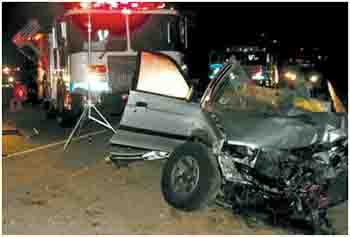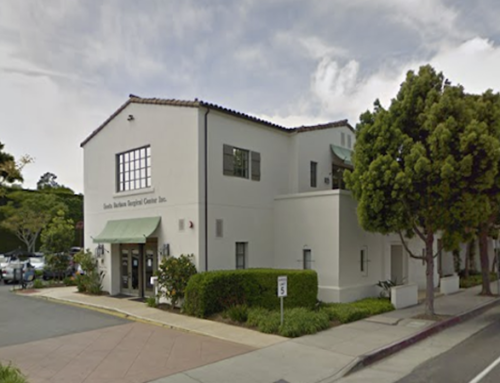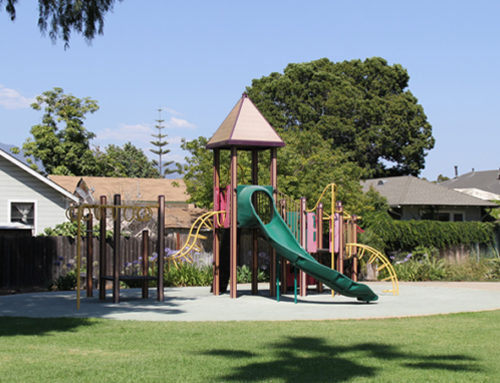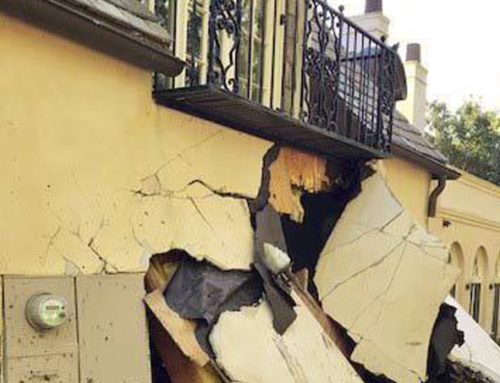June 13, 2011
Santa Barbara Independent – By Tyler Hayden
Attorney Says Deputy at Fault for 2009 Accident Involving DUI Driver
Judge James Brown decided earlier this month to let a wrongful-death lawsuit against Santa Barbara County and the Sheriff’s Department proceed to trial. The complaint, in short, accuses a deputy dispatched to chase a DUI motorist speeding down the wrong side of Highway 101 in 2009 of inadvertently causing a head-on accident between the drunk driver and 18-year-old Marcos Arredondo, who was killed along with one of his passengers in the wreck. Two of Arredondo’s sisters sitting in the back seat of the car — they were all returning from a wedding in Lompoc — were left with permanent, debilitating injuries. They didn’t have insurance, and their Medicare just ran out.
The suit was filed in March by attorney Barry Cappello on behalf of Arredondo’s surviving family members. The judge’s recent ruling allows the case to move forward, though slightly amended. Cappello’s final allegations against the county and Sheriff’s Department include negligence, negligence per se, wrongful death, and negligent infliction of emotional distress. Judge Brown threw out the accusation of negligent supervision and training, giving Cappello the opportunity to rework that specific complaint. Cappello explained to The Independent, however, that he decided not to, and he earlier dismissed the case against the deputy himself but reserves the right to bring it back. The trial is scheduled to begin September 21. The case has been merged with a lawsuit the Arredondos brought against Rodriguez and his family. Rodriguez, though, reportedly isn’t insured and his parents only minimally insured.
The crash took place in the very early morning hours of November 8, 2009, on the highway just south of Storke Road in Goleta. According to police reports, Tustin resident Richard Rodriguez, then 20 years old, was under the influence of cocaine and alcohol when he began driving north in southbound highway lanes. Rodriguez didn’t get far down the road before the accident occurred. He suffered only minor injuries and was sentenced last year to 13 years in state prison for vehicular manslaughter and causing great bodily injury.
In the civil filing, Cappello gives a play-by-play account of what happened, pointing out specifically where he says the deputy erred in his response. The deputy was near the Glen Annie/Storke Road overpass when he got the call from dispatch of a wrong-way driver. He responded, but “acted negligently in doing so,” the lawsuit reads. “Sheriff’s Deputies are not trained to respond to wrong-way drivers on the freeway, and are not supposed to apprehend them as a general rule.” Cappello states the freeway is CHP territory, and that agency has its own set of guidelines to deal with such a situation.
The deputy drove down the Glen Annie/Storke Road on-ramp onto southbound 101, but “apparently not knowing how to proceed,” the suit reads, “he slowed down dramatically and began to merge into the slow lane.” (This section of the highway is only two lanes wide in both directions.) The deputy not only merged so slowly that he endangered other drivers traveling at normal freeway speeds, alleges Cappello, but he also failed to turn on his left-hand turn signal, emergency lights, or sirens.
As the deputy crept onto the highway, Jose Arredondo — Marcos’s father — was traveling southbound in the slow lane in his own car. Marcos was following directly behind him. Seeing the deputy creep into his lane, Jose swerved into the fast lane to avoid hitting the cruiser. Marcos followed his father, but this put them both directly in the path of Rodriguez, who was barreling down the road in the same lane but in the opposite direction.
Confused by the deputy’s move, the complaint reads, Jose signaled to the deputy as he passed by but got no response. At this point, the deputy — now behind Jose and Marcos, but in the slow lane — flipped on his flashing lights, but this further befuddled Jose, who thought he was being pulled over. He switched back into the slow lane in front of the cruiser, but as he was doing this, Rodriguez reached the Arredondos in the fast lane. Rodriguez barely missed hitting Jose, but plowed straight into Marcos, who had no time to react. In the aftermath of the accident, the deputy reportedly remained on the scene and apologized to Jose for how he handled the incident.
In the lawsuit, Cappello claims that the deputy’s decision to engage Rodriguez in the first place, coupled with his failure to properly warn the Arrendondos of the oncoming danger — in fact, putting them directly in the path of it — constituted negligence. His actions, Cappello claims, directly contributed to Marcos’s death and his sisters’ injuries. “Had [the deputy] not breached his duty of care, or simply not entered the freeway at all, the accident would not have occurred,” Cappello sums up.
The Santa Barbara Sheriff’s Department, said Deputy County Counsel Kelly Scott, is unable to comment on the specifics of the case while involved in litigation. Scott also said she couldn’t talk about how deputies deal with wrong-way drivers in general – what kind of training they receive, when they’re ordered to engage or stand down, their degree of coordination with CHP or other law enforcement agencies, and so on – saying only, “We are defending this case and deny any wrongdoing by [the deputy].”
Sheriff’s Department spokesperson Drew Sugars offered the following statement via email: “Our condolences are with each person affected by the crash. Richard Rodriguez’s decision to drive the wrong way on Highway 101 with cocaine and alcohol in his system ultimately claimed two innocent lives, injured two others and resulted in a 13-year state prison sentence. It’s important to note that this tragedy is the result of a severely intoxicated individual who chose to drive impaired… The Sheriff’s Office denies any fault on the part of the Sheriff’s deputy who responded to the emergency call of a wrong-way driver on the 101 freeway.”
When asked how its officers are trained to respond to wrong-way drivers, the CHP was initially reticent about offering any information. “We don’t entertain hypotheticals,” said spokesperson Erin Komatsubara from the agency’s Sacramento headquarters. “If ya’ll don’t run, we ain’t gonna chase ya,” she repeated again and again. A few days later, however, Komatsubara faxed the CHP’s pursuit policy, which offers general guidelines on how best to conduct chases — including wide-ranging discussions of siren/emergency light use, appropriate times to call air support, termination strategies (roadblocks, spike strips) — to keep situations as controlled and safe as possible. There is no specific mention of wrong-way driving incidents in the 27-page document.







